AI is transforming many sectors and creating a significant impact. Product design is one industry that is experiencing rapid changes due to generative design.
One aspect of generative AI is that it reduces the product design life cycle, thanks to the technologies, tools, and resources that simplify the processes. However, it is crucial for product design professionals to be part of the active process to ensure no errors come along the way during product design processes.
That is why this guide will give you every single insight you need to know concerning generative AI in the product design field. Keep reading.
What is Generative AI?
Generative AI is a section of deep learning technology that uses a set algorithm to generate top-quality images, text, and any other content. The process relies on the data used to train the AI model to produce the desired output.
Therefore, in product design, generative design includes the use of AI-powered software and technologies to produce the required design based on a given criteria.
Contrary to the traditional design process, which relies on the knowledge and concept of an engineer, generative AI in product design depends on the design parameters in the AI model to produce the required design.
Generative design application
The use of generative design cuts across different industries, including consumer goods, manufacturing, architecture, and aerospace. Professionals introduce this model to help solve complex engineering processes.
In the end, they can optimize performance, customize the components, and reduce the overall manufacturing costs.
What are the benefits of Generative AI in product design?
When product designers and developers integrate generative AI technology in the product design & development processes, they enjoy several benefits, including the following:
-
Fostering Creativity
One aspect that makes generative AI stand out is its ability to foster creativity. The technology has the power to analyze large volumes of data sets and analyze already existing designs to come up with the best concept. This can be impossible with traditional methods.
As a result, designers get a chance to augment their creativity with that of AI systems to explore unreached design heights.
What’s more, generative AI has the power to synthesize varied influences, and this gives designers room to blend in themes, styles, and elements in a smooth manner. This leads to the production of impressive and unique designs that align with market trends and technologies.
-
Human-AI Collaboration
Although generative AI has the power to produce unique and impressive designs independently, the human designer’s collaborative efforts make it even more powerful.
Combining human creativity with that of generative AI leverages generative AI and human capabilities, thus giving both sides powers and strength to produce remarkable designs.
It is the designers that feed the AI with the right data and give it the right direction towards producing the best designs that match the vision or rather objectives of the business.
What’s more, the collaborative element between human powers and generative AI gives designer useful insights as they shape their creativity space. They (designers) have a chance to interact with suggestions from generative AI, thus having a deeper understanding of the whole design concept.
In the end, they can put up with the ever-changing technology and practices in the design landscape.
So, in a nutshell, the collaboration between generative AI and humans enhances the overall design quality by promoting creativity and enriching designers with better skills.
-
Streamlining Workflows
A successful product design process relies on streamlined workflows, and generative AI applications has the power to automate tasks, thus creating a smooth workflow. This is contrary to the traditional design methods, which are where most tasks are repetitive.
Task automation in generative AI gives designers room to shift their focus to other constructive tasks that will help them achieve their objectives within a short timeline, especially when handling a complex design project.
Again, generative AI is valuable in rapid prototyping – generating many designs effortlessly and in less time. This enhances productivity and allows designers to explore even more design options. The more designs there are, the better decisions the designers make.
-
Reduced time and cost
We’ve talked about task automation before. Since generative AI has the power to automate tasks, it speeds up the development process, thus cutting down on costs and overall production time.
-
Optimizes product designs
In the product design field, it can be hard to want. The behavior patterns change over time, and this can cause hiccups in the business. One season, the users prefer a specific design, but as market trends shift, the desire for another design comes up, thus forcing the user to shift to alternatives. This will harm the business.
Generative AI can explore market trends and practices using deep learning technology to come up with a reliable solution for the business. The insights gathered by generative AI will then help designers make informed decisions without the fear of the unknown.
What’s more, generative AI can come up with insightful ideas once you realize the decline rate is growing higher. This gives you a perfect opportunity to adjust the already existing product to fit the current market standards, thus fostering business stability.
Generative AI in product design challenges
Although generative AI in product design has the power to produce top-quality content, code, text, and other design-related ideas, it also comes with a set of challenges that need to be addressed. These challenges include the following:
-
Quality & quantity of the Data
For generative AI to stand out and function well, it requires accurate and vast amounts of data. It can be hard for a setup to come up with reliable data sets to fit in a specific product domain. Therefore, a lack of good data quantity and quality can mislead the generative AI into producing inaccurate results.
-
Integration with Existing Workflows
Integrating generative AI into product design workflows can be a complex process. The teams have to change most of their task processes and embrace the use of new tools. This causes a disruption of the work in progress and requires adequate time to train the teams and effect the changes.
-
Costly
Sometimes, the outputs of AI models might not meet the set standards for a specific organization. Therefore, the organization has to go overboard and fine-tune and customize the generative AI model to produce designs that align with the company’s objectives. This will attract more resources, thus making the whole investment expensive.
-
Lack of Domain-Specific Knowledge
Generative AI models often lack domain-specific knowledge. While they can generate content, they may not understand the nuances or specific requirements of a particular industry or product category. This can lead to AI-generated content that lacks depth and context.
-
Quality Assurance and Validation
To measure accuracy and consistency in generative AI models, reliable quality assurance and validation processes have to be used. This is to ensure that the generative AI produces designs that align with the objectives of the company. This can be a big challenge, especially when no professionals are involved.
-
Intellectual Property Concerns
Questions about intellectual property ownership and rights will always emerge when a generative AI produces codes and creative designs. Therefore, it can be a complex process to determine licensing and ownership of AI-generated designs.
-
Security and Privacy Concerns
Sometimes, AI can expose an organization’s confidential data, and this can lead to security or privacy concerns. It is, therefore, up to the stakeholders to put in place measures that will guarantee the privacy and security of private data.
-
User Acceptance
Another big challenge that comes with generative AI is user acceptance. The internal teams may be skeptical about why it comes to depending on AI to handle product design tasks. This might cause resistance to some extent. Some product users, too, may doubt AI products and may resist using such products.
Therefore, it is upon the organization to evaluate these challenges and address them so that they can embrace technology in their workflows. Otherwise, generative AI is here to revolutionize the product development processes by fostering creativity, maximizing production, and automating tasks.
Generative AI in product design best practices
Although using generative AI in product design comes with a set of challenges, you can overcome the challenges by considering the following best practices:
-
Choose a use case
As you implement generative AI technology, start by defining the business use case as the first step.
In product design, there are many ways in which generative AI can enhance workflows. So, highlight the goals and objectives of the generative AI, then create a detailed plan of how you will execute the processes to enhance productivity.
-
Put in place data privacy guidelines
As mentioned before, data privacy is one of the generative AI changes. You don’t want to encounter unauthorized access, data breaches, and misuse of the company’s data.
Therefore, think of a strategic plan to address all the privacy and data guidelines to mitigate such challenges.
Consider adding a human workforce for training, testing, and reviewing the potentiality of generative AI in product design processes.
-
Test and learn
Generative AI is an emerging technology and it keeps advancing from one level to another. Therefore, it can be hard to accept the fact that generative AI is reliable in all product design processes.
Therefore, perform testing using different approaches to ensure the generative AI is effective in product design.
This will give your employees an opportunity to familiarize themselves with different AI apps as you note the effectiveness of the technology in specific use cases.
Testing also offers room to explore possible generative AI limitations to determine the areas that require more human efforts.
-
Prepare your team members
Again, your team members should be ready to embrace generative AI technology. This requires adequate preparation to experience a smooth AI integration into product design processes.
Therefore, prepare the teams by doing the following:
- Encouraging employees to take part in continuous testing & feedback
- Training the employees on important procedures
- Communicating the effectiveness of AI in the workflows.
Don’t forget to offer extensive training on available AI technologies and the terms used, specific use cases, and ethical AI practices. Also, explore the AI tools and resources that help shape the product development processes- how to use them, when to use them, and when not to use them.
Note: Involving the teams creates a smooth working environment for all. Again, this will give the employees the freedom to ask questions, give feedback, and embrace the new technology positively.
-
Create a Center of Excellence
A center of excellence focuses on discovering, integrating, and implementing the use of generative AI in product design processes. Of course, this is because generative AI is a transformative technology that will impact business operations. However, you and your teams must be ready to embrace the changes, hence the need to create a center of excellence to measure performance.
-
Hire professional designers and engineers
Generative AI is a technology to embrace. However, to get the most out of it, you need to hire experts designers who understand the AI models better, give you feedback and suggestions throughout the processes, and offer technical support to ensure the effectiveness of the technology in your business.
-
Use data of high-quality
When feeding the generative AI model with training data, don’t just include any data. Filter out and use high-quality data to ensure accurate results. For a generative AI to produce accurate results, you must feed it with accurate data. Therefore, use only updated and reliable data here.
What is the future of generative AI in product design?
The technology space is advancing rapidly. Many industries have now integrated AI into their workflows to streamline processes and automate tasks. In the product design field, we can expect the generative AI implementation to grow to the next level.
One area that is likely to grow and scale the entire business is incorporating real-time feedback in the design processes. This will create room for creating dynamic, reliable, and responsive designs for the product.
Using generative AI for multi-disciplinary design optimization is another area of interest. The technology involves optimizing the product design along with other processes such as supply chain, materials, and manufacturing processes.
Conclusion
The introduction of AI technology has transformed different industries significantly. Product design processes have now been made easier and seamless, thanks to generative AI. While this technology comes with a set of challenges, it is upon the organization to put in place measures to curb the challenges as described in this guide.
Otherwise, integrating generative AI in your product design life cycle might be what you need to do to maximize productivity, move with the market trends, and scale your business to the next level.
Any queries? Get in touch with our AI development company – Aalpha information systems!
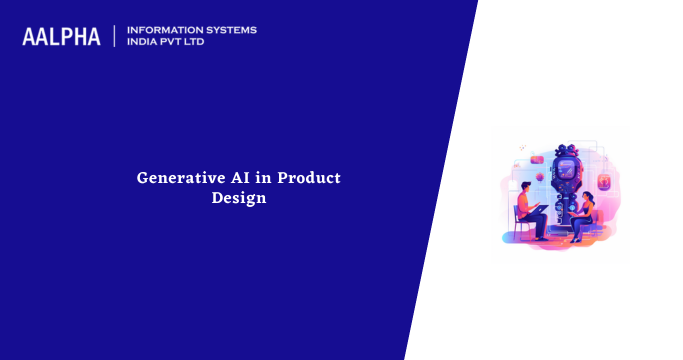

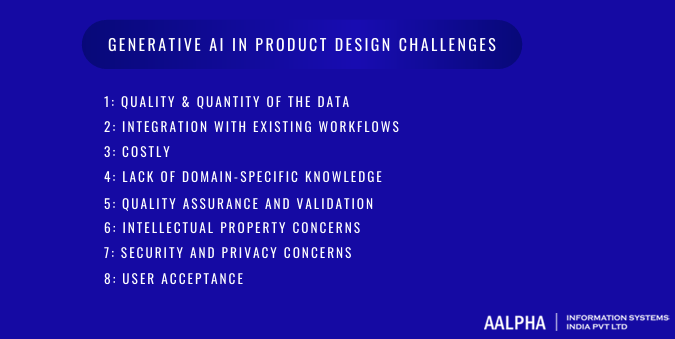
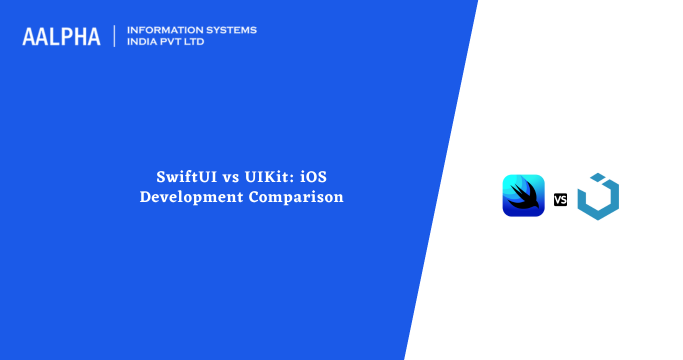
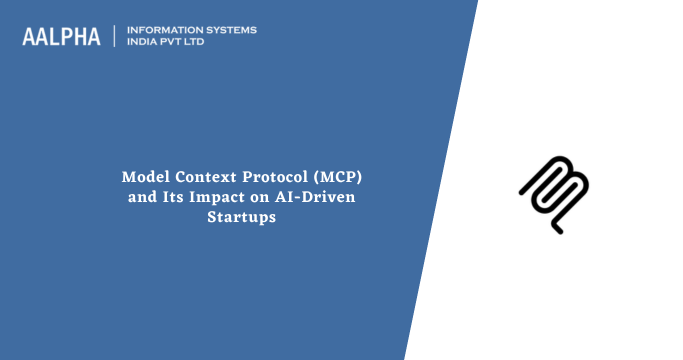
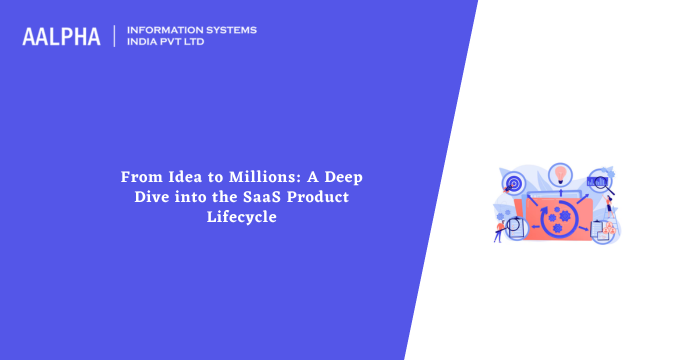
Share This Article:
Written by:
Stuti Dhruv
Stuti Dhruv is a Senior Consultant at Aalpha Information Systems, specializing in pre-sales and advising clients on the latest technology trends. With years of experience in the IT industry, she helps businesses harness the power of technology for growth and success.
Stuti Dhruv is a Senior Consultant at Aalpha Information Systems, specializing in pre-sales and advising clients on the latest technology trends. With years of experience in the IT industry, she helps businesses harness the power of technology for growth and success.